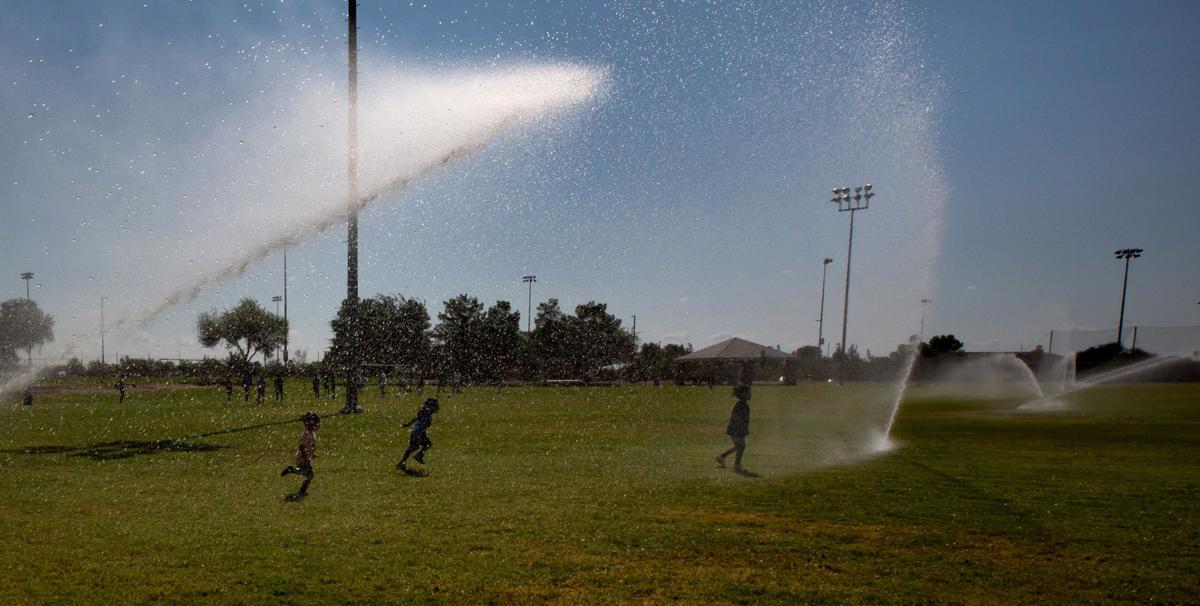Think Phoenix. Think Yuma. Think Las Vegas. Think Abu Dhabi, even Riyadh.
From a drought standpoint, 2020 in Tucson resembled those rain-starved desert cities far more than itself during our driest year on record.
Pounded by the twin forces of a nonexistent summer monsoon and a La Niña fall-winter event, Tucson got only 4.17 inches of rain last year. That’s more than 6 inches below the average annual total of 10.59 inches.
The previous record low rainfall came 96 years ago — 5.07 inches in 1924, the National Weather Service said. The service’s records for Tucson date to 1895.
Every month last year got less rainfall than normal. It was the first time that happened since the weather service started keeping such records for Tucson in the early 1950s, said the service’s annual Tucson climate report.
The summer monsoon rainfall of 1.62 inches made for the second-driest monsoon season on record. That was one one-hundredth of an inch more rain than in the driest monsoon on record, in 1924.
Ratcheting up the discomfort level, the drought was coupled with Tucson’s second-hottest year on record. The city’s average annual temperature of 72.6 degrees trailed only 2017’s annual average of 73.3 degrees, the weather service said.
Not only did Tucson have its largest number of 100-plus degree days on record last year — 108 — it also had the most 105-degree plus days on record — 57.
Tucson’s 35 days in which low temperatures hit at least 80 degrees and 75 days where they hit 75 degrees or more far exceeded previous records.
But extreme heat in Tucson is hardly shocking now. Eight of the city’s hottest years on record have occurred starting in 2009.
Rainfall in 2020 here, however, followed two years of above-normal annual Tucson totals. It was also:
- Almost an inch less than the 5 inches that fell in Phoenix last year, and almost 3 inches less than the Valley of the Sun gets in a normal year.
- Only 0.05 inch more than what normally falls annually in Las Vegas. Its 2020 rainfall was much lower than ours at 2.35 inches.
- Only 0.02 inch more than what normally falls in Yuma, and barely a half-inch more than Yuma’s 2020 total rainfall.
- Only an inch more than what normally falls annually in Abu Dhabi, United Arab Emirates, and 0.17 of an inch more than what falls in Riyadh, Saudi Arabia.
“The first part of the year we got some rain. Although it was still below normal, we still had storms,” said John Glueck, a senior weather service meteorologist in Tucson, in explaining last year’s record drought here. “When we got into summer, high pressure for the most part sat over the state. It was not a favorable flow for the monsoon.
“Now, with La Niña conditions, there are normally dry conditions associated with that,” Glueck said, referring to a winter weather phenomena triggered by major variations in sea-surface temperatures across much of the equatorial Pacific Ocean.
He noted that Phoenix got only 15 days of rain, compared to Tucson’s 30. But Phoenix had two days with more than an inch each of rainfall, whereas Tucson’s biggest storm produced only 0.78 of an inch and half of its 30 days of rain produced 0.1 of an inch or less.
Glueck couldn’t account for those differences, or for why Tucson’s 2020 weather was much drier compared to normal than Phoenix’s weather last year. “You can’t explain it. It’s just one of those things,” he said.
Personally, Glueck, who regularly compiles Tucson’s annual weather statistics and has worked for the weather service here 24 years, said he’s gotten used to the extreme heat.
But he granted that the way the “nonsoon” worked out this year was depressing.
“A lot of people really, after our winter storms, then the initial heat waves in May and June, they look forward to the lightning events and rain after that. But the cooling we look forward to, (that accompanies the monsoon), that just wasn’t there last year.”
As for 2021, the weather service predicts the dry weather accompanying La Niña should last into early summer, while higher-than-normal temperatures are expected indefinitely.
While the weather service predicts an equal chance of above- or below-normal precipitation starting in six months, Glueck said he thinks this year’s monsoon season won’t be as bad as last year’s.
Records show a “mixed bag” of wet and dry monsoon seasons following La Niña, but there have been more wet post-La Niña monsoons overall, he said.
“Considering what last year was, you can’t get any worse,” Glueck said.
As for the long term, Tucson last year had its 22nd straight year of above-normal temperatures. Climate scientists here and elsewhere expect it will continue getting hotter over the coming decades.
“It is just a matter of how hot it will be. We just all can hope and cross our fingers that we have an active monsoon,” Glueck said.
Glueck declined to say, however, whether he thinks Tucson’s in a long-term drought, a point of contention among many climate scientists.
“I’d just rather not answer that question,” he said.





